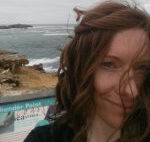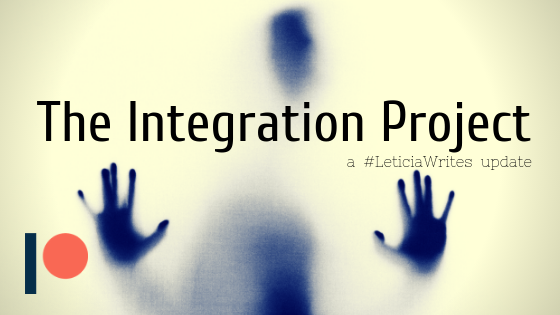In last week’s update to you guys, I was super excited to tell you that I finished the Ultimatum screenplay! Woohoo!
Today, the first thing I did was print it and stash it – and all of the cards off The Board – in my projects drawer, where it is going to sit for about 90 days before I rewrite it.
Taking the cards off The Board I had a rush of excitement. I couldn’t do it fast enough. Remove! Remove! I wanted them all just off with a wave of my hand, but it took forever because I had to peel the cards off the board, then peel the blu-tack off the cards, and then grimace when the paper stuck to the blu-tack anyway, and then gather them all together. Then peel off all the sticky notes, and put them together. Then push them all into a cohesive, coherent pile.
I wrapped them in yellow paper, wrote the archival date on the outside, and put them into the Resting Drawer of my writing bureau, with the other projects that are either in progress or that are resting.
My husband said to me yesterday, ‘I think you should write a book’.
This was already my plan, as you know. My challenge at the beginning of the day is that I had the beginnings of a book in mind, and I didn’t know where it was going to go. Because it is fiction this time, I didn’t have the luxury of research in order to procrastinate.
After journalling my way through it, I realised that the idea I’d had in mind was a romanticism and not something that could work. It would have ended up being more of my own cogitation on the nature of Human, and wouldn’t challenge me enough.
One of the things that does challenge me is creating worlds. I’m quite grounded in this reality. I think about it a lot, and I write about it a lot. This is why creating worlds and situations is so enticing to me, and also so scary and exciting.
As I journaled my way through the thinking today, I found myself confronted with a woman-overcomes-man-and-herself kind of story. I decided that writing a psychological drama or a feminist tract just wasn’t my thing right now.
So instead, I listened to my body.
I asked it: What is it that I need to be writing.
As I sat, a sensation emerged in my belly. It rose up and wrapped itself up and around the back of my neck, whispering in my ear. The sensation suggested quietly that I write a story about what happens when humans connect mentally and emotionally without language. If you’ve read any blogs here at [e]xpositio, you’ll know that this is part of my next-level-crazy, 100-year-plan.
The sensation asked, Where are we, in the end? How did we get here?
I journaled my way through a whole lot of questions. How do I write it? What perspective was it? How does the time work? Is it a biography?
The biography was enticing, I won’t lie.
So I wrote a paragraph about what this might be like, and the story just emerged. But there was one problem. There was no conflict.
So I wrote it again. I started with the word ‘maybe’. Maybe she’s working for a tech company…
Then every time I wrote a moment that I could then consciously recognise, I wrote ‘yes’.
I kept writing.
I wrote for nearly an hour, and suddenly I had almost five pages, right through to The End. It felt good. I know that there are some things that I need to research; one of which is to go back and read the article that I saw briefly last week about some scientists that have created a way of connecting brains so that they can share thoughts simultaneously. Yep, that’s really a thing.
This took me up to lunchtime. There was this niggling sensation that I there were gaps and problems in terms of not enough conflict. Here’s what I wrote to myself:
I feel like there are gaps and problems in terms of not enough conflict, not a strong enough resolution, not enough of a reason. But maybe that will fall out in the writing. Maybe the story will change.Right now all that matters is that I have a story – one that is long enough and complicated enough to make it into a proper-length novel. One that I can put on the board.So I guess it’s back to The Board. Time to do the work to map this baby out before I start writing it. This way I can work out what kinds of research I will need, but given it’s fiction at this point, I can simply write and back-fill wherever I need to back-fill it.



